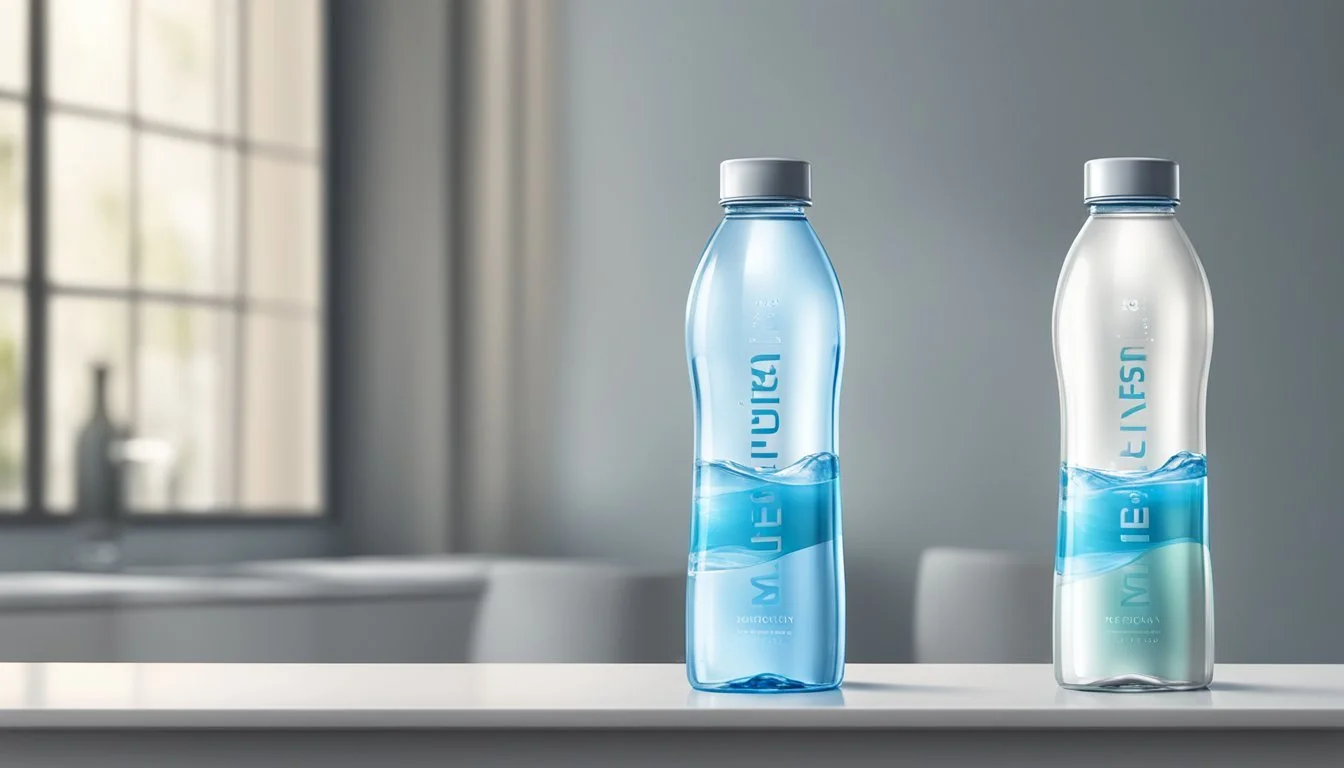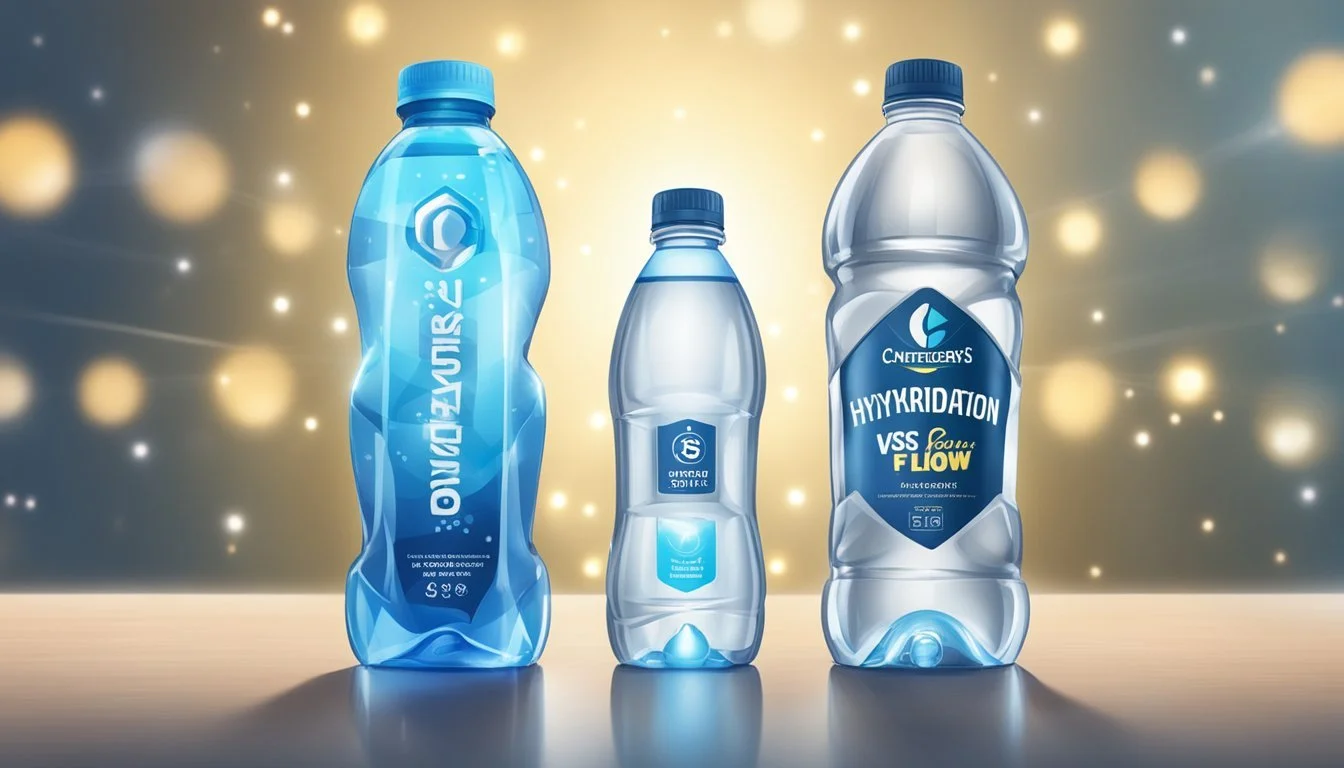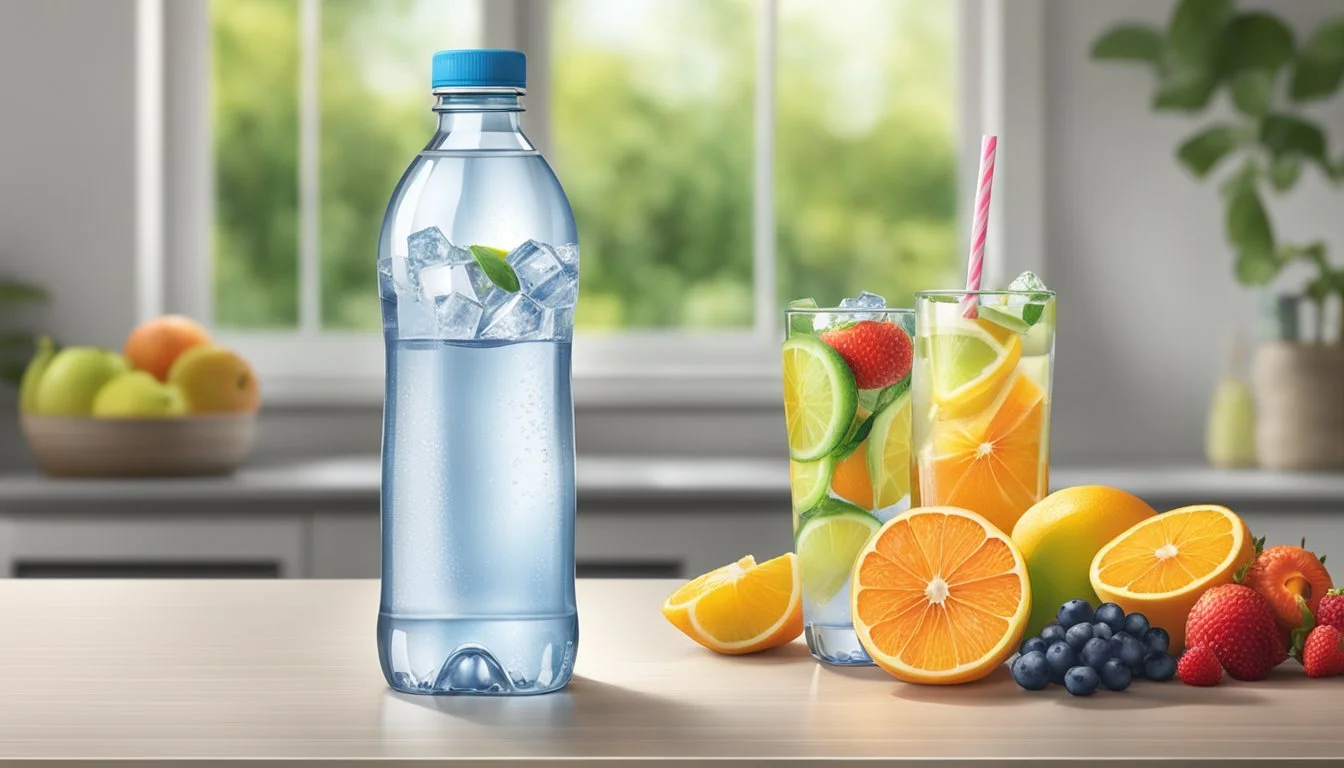Core Hydration vs. Flow
Bottled Water Comparison Guide
When it comes to bottled water, Core Hydration and Flow are two brands that stand out for their unique offerings targeting health-conscious consumers. Core Hydration markets itself as a premium brand with ultra-purified water and a pH that matches the human body's natural state. Its inclusion of electrolytes and minerals aims to provide balanced taste and enhanced hydration, all wrapped up in a 100% recyclable, BPA-free plastic bottle.
Flow, on the other hand, sets itself apart by focusing on sustainability and natural mineral content. Packaged in eco-friendly Tetra Pak cartons, Flow water is sourced from naturally alkaline springs, providing essential minerals like calcium, magnesium, and potassium without any additives. This natural approach appeals to consumers who prioritize organic and environmentally friendly products.
When comparing Core Hydration and Flow, consumers must decide between the ultra-purified, electrolyte-enhanced option of Core or the naturally alkaline and eco-friendly offering of Flow. Choosing between these brands depends largely on personal preferences for hydration needs, environmental impact, and overall health benefits.
Unveiling the Contenders
Core Hydration and Flow offer unique selling points, from pH balance and electrolytes to eco-friendly packaging, aiming to attract health-conscious consumers.
Brand Overview: Core Hydration
Core Hydration markets its water as having a balanced pH of 7.4, aligning closely with the body's natural pH level. This neutral to slightly alkaline pH is aimed at providing optimal hydration.
Core Hydration bottles come with added electrolytes such as potassium bicarbonate, magnesium chloride, and calcium chloride to improve taste. These electrolytes support better hydration and add health benefits.
The plastic bottles used are 100% recyclable and BPA-free, emphasizing the brand's commitment to consumer health and environmental responsibility. The ergonomic design of the bottles provides a comfortable grip, adding to the user experience. Core Hydration also enjoys a celebrity following and a modern brand image, making it a popular choice among trendy, health-focused consumers.
Brand Overview: Flow
Flow is known for its eco-conscious approach, utilizing paper-based packaging that is 100% recyclable. The brand aims to minimize its environmental impact, positioning itself as a leader in sustainable bottled water options.
Flow offers natural alkaline spring water with a pH of around 8.1, slightly higher than Core Hydration, which may appeal to consumers looking for more alkaline options. The water is rich in naturally occurring minerals and electrolytes, enhancing its hydration properties and taste profile.
The brand places a strong emphasis on source integrity, ensuring that the water is sourced from protected springs and remains untouched until bottled. Flow's packaging also includes no artificial flavors, colors, or preservatives, ensuring that the product remains as pure as possible for consumers. This commitment to purity and sustainability makes Flow a standout option in the bottled water market.
Health Benefits and Hydration
When comparing bottled water options like Core Hydration and Flow, several key aspects regarding health benefits and hydration are crucial. These include the presence of essential minerals, the role of hydration in body function, and the pH levels' impact on human health.
Essential Minerals in Bottled Water
Core Hydration and Flow both offer water enhanced with essential minerals. Core Hydration includes potassium, magnesium, and calcium to help balance the body's pH. Potassium aids in muscle function, while magnesium contributes to energy production.
Flow water, known for its natural electrolytes, contains magnesium, calcium, and potassium, similar to its competitor. These minerals are vital for maintaining proper fluid balance and supporting metabolic processes. Notably, the exact amounts of these minerals can vary, affecting their overall benefit.
Hydration and Body Function
Staying hydrated is essential for maintaining bodily functions. Core Hydration claims to enhance hydration with a blend of electrolytes, promoting optimal fluid balance. Proper hydration ensures efficient circulation, digestion, and temperature regulation.
Flow, being naturally alkaline, also supports hydration effectively. Drinking alkaline water may offer added benefits like neutralizing stomach acid, although these claims require more scientific backing. In any case, both brands provide hydration that supports overall health and bodily functions.
pH Levels and Human Health
Core Hydration is formulated to have a pH level of 7.4, which aligns closely with the body's natural pH. This balanced pH can help maintain bodily equilibrium and support metabolic processes.
Flow water has a naturally alkaline pH of around 8.1. Alkaline water is often marketed for benefits such as neutralizing acid in the bloodstream and improving metabolism. While these claims have some scientific support, it’s important to consider individual needs and preferences when choosing the best option for health and hydration.
Production Quality and Safety
Examining the production quality and safety of Core Hydration and Flow, the focus is on their purification processes, the ingredients and additives used, and the safety standards they maintain.
Purification Processes
Core Hydration utilizes a multi-step purification process that includes reverse osmosis and carbon filtration to remove impurities and contaminants. This method ensures the water is purified to a high degree, reducing potential harmful substances such as lead and heavy metals.
Flow, on the other hand, touts its naturally alkaline spring water, which undergoes minimal processing. Its natural filtration passes through limestone, enriching the water with minerals and providing a natural source of purified water without the need for aggressive purification processes, such as reverse osmosis.
Ingredients and Additives
Core Hydration enriches its water with various electrolytes, including potassium bicarbonate, magnesium chloride, and calcium chloride. These ingredients are added to enhance taste and complement the body's natural electrolyte balance.
Flow maintains a different approach by offering naturally occurring electrolytes and minerals in its water. It does not add synthetic compounds, providing a more natural drinking experience. Flow’s water typically contains naturally balanced sodium, calcium, and magnesium levels derived from its source.
Safety Standards
Both Core Hydration and Flow adhere to stringent safety standards. Core Hydration's plastic bottles are 100% recyclable and BPA-free, addressing concerns over endocrine disruptors and environmental impact. This focus on safety extends to their processing facilities, regularly audited to meet high regulatory standards.
Flow prioritizes sustainability with its packaging, using tetra pak cartons that are fully recyclable and sourced from renewable materials. Flow’s commitment to safety is evident in their transparent sourcing and minimal processing, which preserves the natural integrity of the water while ensuring it is free from contaminants.
By focusing on these aspects, both brands aim to deliver safe, high-quality water to consumers while also emphasizing environmental responsibility and health-conscious packaging.
Taste and Refreshment
This section explores the primary differences in taste and refreshment between Core Hydration and Flow bottled water, considering their taste profiles and the influence of their mineral content.
Taste Profile Comparisons
Both Core Hydration and Flow bottled water are designed to deliver unique flavors that cater to different palates.
Core Hydration has a smooth and crisp taste, attributed to its balanced pH level of about 7.4. This pH balance is meant to align closely with the body’s natural levels, providing a neutral flavor that is neither too acidic nor basic.
Flow, meanwhile, offers a distinct taste derived from its natural alkaline spring water source. Flow’s water has a soft, rich texture and a slightly sweet finish, often preferred by those who enjoy mineral-rich water. This can be refreshing during physical activities and daily consumption.
Affect of Minerals on Taste
Mineral content plays a crucial role in defining the taste of bottled water.
Core Hydration contains a blend of electrolytes such as potassium bicarbonate, magnesium chloride, and calcium chloride. These minerals not only add subtle nuances to the taste but also contribute to the overall hydration benefits of the water.
Flow water is known for its naturally occurring minerals like calcium, magnesium, and potassium. These minerals impart a slightly sweet and smooth taste, making the water feel more refreshing and satisfying. The balance of these minerals ensures that the water maintains a pleasing taste without any artificial additives.
Both brands leverage their unique mineral compositions to enhance taste and refreshment, meeting the preferences of different consumers.
Environmental and Economic Aspects
Both Core Hydration and Flow have unique features that influence their environmental impact and economic value. This section will explore the cost and convenience of bottled water and how these brands address sustainability concerns.
The Cost of Convenience
Bottled water offers unmatched convenience, but this comes at a financial cost. Core Hydration, known for its balanced pH and enhanced nutrients, often fetches a premium price due to its market positioning and celebrity endorsements.
Flow, marketed as an eco-friendly option, also tends to be priced higher than standard bottled water.
Despite the higher costs, these brands attract consumers who value health benefits and sustainability. Core Hydration's plastic packaging and Flow's recyclable cartons both play roles in their pricing strategies, reflecting their respective production and material costs.
Environmental Impact of Bottled Water
The environmental footprint of bottled water is a significant concern. Core Hydration uses plastic bottles, which contribute to plastic waste if not properly recycled. The production and disposal of these bottles impact landfills and oceans.
Flow, by contrast, uses recyclable cartons that can reduce the environmental toll if recycling facilities are accessible.
Both brands aim to mitigate their environmental impact through sustainable practices. Core Hydration promotes recycling among consumers, while Flow's packaging offers a sustainable alternative to traditional plastic bottles. These efforts align with broader sustainability goals but require consumer participation and effective recycling systems to succeed.
Comparative Analysis
A detailed comparison of Core Hydration and Flow water brands reveals key insights into their nutritional content and market influence, focusing on consumer preferences and overall brand reputation.
Nutrition Facts and Labels
Core Hydration markets itself as boasting an optimal pH balance of 7.4, which aligns closely with the human body's natural pH level. It incorporates electrolytes such as potassium bicarbonate, magnesium chloride, and calcium chloride. These ingredients aim to enhance taste and promote better hydration.
Flow Water on the other hand, prides itself on being 100% naturally alkaline spring water with a pH of 8.1. It is rich in minerals such as calcium, magnesium, and bicarbonate, sourced sustainably. Flow emphasizes its eco-friendly packaging made from renewable resources.
Brand pH Level Key Ingredients Core Hydration 7.4 Potassium bicarbonate, magnesium chloride, calcium chloride Flow Water 8.1 Naturally occurring minerals: calcium, magnesium, bicarbonate
Market Presence and Consumer Preference
Core Hydration targets health-conscious consumers and those with active lifestyles. Its sleek, ergonomic bottle design appeals to a younger demographic. The brand enjoys strong visibility in fitness clubs and grocery chains.
Flow Water attracts eco-conscious consumers due to its sustainable packaging. It is distributed widely across North America and is frequently found in health food stores and online retail. Flow's market presence leans towards consumers who prioritize environmentally friendly products over performance-focused features.
Brand Consumer Base Market Distribution Core Hydration Health-conscious, fitness Fitness clubs, grocery chains, convenience stores Flow Water Eco-conscious, health Health food stores, online retail, environmentally focused outlets
Final Thoughts
Core Hydration and Flow both cater to those seeking optimal hydration and health benefits.
Core Hydration markets its water with a balanced pH level of about 7.4. This is meant to be in sync with the body's natural pH level. Flow also offers a high-quality product but promotes its natural alkaline water with trace minerals and electrolytes.
Both brands emphasize hydration, positioning their products as suitable for exercise and daily routines. Core Hydration's smooth taste results from the addition of electrolytes, whereas Flow relies on its natural spring source.
Health benefits often highlighted include improved physical performance and better mental health due to adequate hydration. Flow packages in eco-friendly, sustainably sourced cartons, appealing to environmentally conscious consumers.
Feature Core Hydration Flow pH Level ~7.4 Naturally Alkaline Electrolytes Yes Naturally occurring Packaging 100% Recyclable Plastic Sustainable Cartons Target Audience Health-conscious, athletes Environmentally conscious, health-conscious
Mental health and overall wellness are indirectly supported by both brands through improved hydration. The choice between Core Hydration and Flow may come down to personal preferences on taste, packaging, and lifestyle priorities.






